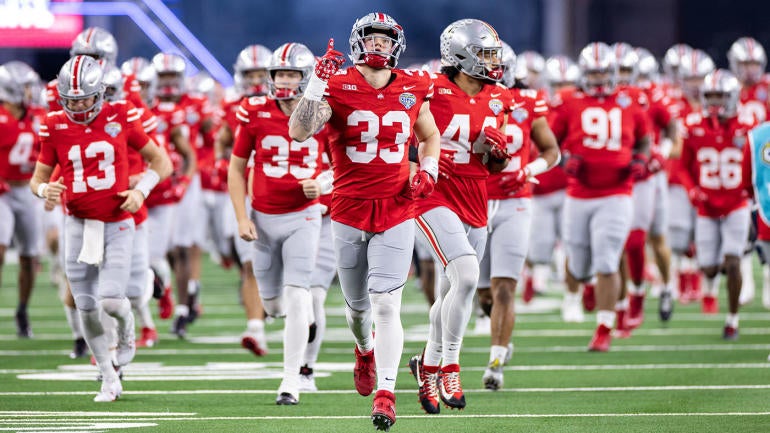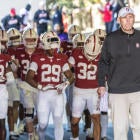
Ohio State football players received "around $20 million" in name, image and likeness (NIL) money from collectives and brand affiliates this past year, a number believed to be the highest in the sport, Ohio State AD Ross Bjork told Yahoo Sports. Ohio State athletes are required by the school to disclose their agreements within 30 days of receiving NIL compensation, which helps shed light on the total amount of money given to the athletes within the program.
The high-money investment should come as no surprise due to the high-end talent on the Buckeyes roster. Multiple players such as WR Emeka Egbuka, RB TreVeyon Henderson, DE Jack Swayer and CB Denzel Burke elected to bypass the NFL Draft to return to school for another season. Additionally, marquee transfers, such as former five-star quarterback Julian Sayin, Alabama star safety Caleb Downs, Ole Miss running back Quinshon Judkins and Kansas State quarterback Will Howard, were brought in to shore up the roster.
The Buckeyes finished with the third-ranked recruiting class in the 2024 cycle, according to 247Sports, headlined by the addition of five-star wide receiver Jeremiah Smith — the top-ranked player in his class. Ohio State's 2025 recruiting class is also tracking to be among the best in the country. The Buckeyes currently have the top-ranked recruiting class due to commitments from blue-chip recruits Tavien St. Clair, Devin Sanchez, Na'eem Offord, and more.
More money could be on the way thanks to the House v. NCAA settlement. Power Four programs will have the ability to distribute approximately $20 million annually to players through a new revenue-sharing initiative starting next fall. The amount of money distributed is expected to vary but will represent about 22% of the annual revenue generated by each school.
"We all are going to follow Title IX," Bjork told Yahoo Sports. "It applies to our athletic programs, universities, all of those things. But this is a new pocket of financial aid or compensation, a new bucket that was not contemplated when only financial aid and just grant-in-aids were talked about in the original Title IX legislation. We need a lot of analysis. What does the legal analysis say around this newfound bucket of money?"
![[object Object] Logo](https://sportshub.cbsistatic.com/i/2020/04/22/e9ceb731-8b3f-4c60-98fe-090ab66a2997/screen-shot-2020-04-22-at-11-04-56-am.png)
















